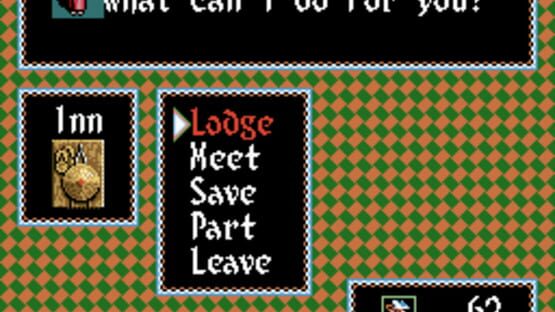

"Inindo: Way of the Ninja" is a console-style RPG with a touch of strategy. You navigate your hero on the world map, visit towns, and descend into dungeons. The battles are turn-based and are viewed from a third-person perspective, like in Final Fantasy games. You can move on the battle field and use melee or long-ranged attacks. You'll be able to recruit characters of various classes to your party, who will join you for profit or for other reasons. After you gain enough experience, you'll also be able to talk to daimyos (feudal rulers) of various castles and to convince them to work together against Nobunaga. You can also perform various tasks for the daimyos, such as spying. 1581, Japan. Fearing a rebellion and striving to conquer the entire country, the warlock Nobunaga orders to attack the Iga ninja clan. The ninjas bravely defend their village, but, being vastly outnumbered, are mercilessly slain by Nobunaga's men. Only one survived: you, the hero of the game. Shortly before the assault you were sent to a nearby village to warn the elder of Nobunaga's attack. However, the other village is also destroyed by Nobunaga's army. You swear to avenge his crime. But for now, you are just an inexperienced young men, and are "wanted" by Nobunaga's men and ruthless bounty hunters. Will you be able to unite Japan in the ultimate struggle against Nobunaga?
Reviews View More
The basic gameplay is a pretty standard turn-based JRPG with a couple of wrinkles. Characters have positioning on the battlefield that determines who they can attack and who can attack them. This makes positioning very important and allows you to actually protect party members to an extent that is present in few other games. Although the optimal way to play can be solved pretty early, I still liked the tactical skew.
Like Final Fantasy 1, there are a set of items in the game that can be used in battle which obviate most of the characters and homogenize the gameplay by the end, though I also think the balance is such that without these items finishing the game would be pretty brutal.
Throughout the game you are traveling on a map that is controlled by various Daimyos as they struggle for control of Japan against each other and Oda Nobunaga (the game's antagonist). This is a fairly simple simulation that you can use your ninja abilities to influence by sabotaging castles, spying and participating in full-scale wars. Spying and sabotage are just a menu option that succeeds randomly (while playing a super long animation) and gives you information about an enemy or destroys some of their resources. The wars take place on a tactical map and you can use magic your characters have gained to influence them.
This is a pretty cool little mini game and is the most unique thing about Inindo, but the execution is extremely tedious. Spying and sabotaging take too long and are too random, and the battles are all super easy to win with the first spell you ever learn.
Characters are taken from a huge stable of ninjas, samurai, healers, and sorcerers that are wandering the world. Each type has different combat and war abilities. You can meet them in Inns, chat them up, and convince them to join your party. I liked this mechanic but it has some weirdness.
It is hard to determine which characters are better and some of them have special skills (Flight is basically required) you don't know about until they join you.
If you have someone leave your party they destroy all the items they are holding, so you have to do a lot of management when getting a new fighter to join you.
Balance is pretty off -- I struggled to find a character that could come close to my main character in terms of utility and power.
The UX of Inindo is really terrible, unfortunately. Although it is a Super Nintendo game, most things function like Dragon Quest 2 or 3. Characters have individual inventory that cannot be easily traded or organized (using items in battle is super annoying unless you do a lot of manual trading to get them to the top of your inventory lists). Everything in the game takes too many button presses and has animations that are too slow. Smaller issues like a lack of real cursor memory make everything just feel worse than it needs to. This hurts the game a lot, unfortunately, since many of the systems are also repetitive and tedious.
The narrative here is very simple. Nobunaga has destroyed your village and your goal is to explore the land to acquire ninja abilities so you can go kill him. Like every version of Nobunaga in a game, he is a demon or something. This is all just to drive open world exploration that you can mostly take at your own pace, though you must do the dungeons to gain the abilities in a particular order. This works well and exploring a world map that is just a recreation of Japan is cool.
There are also quite a few side quests to get special items and explore optional dungeons, mostly exposed through townspeople talking about rumors.
I had an ok time with Inindo, though I mostly just appreciate it for all the unique systems at play. You can see what the team was going for here and some things really work, but the execution is too clumsy and the game is too long and tedious for me to recommend it.
